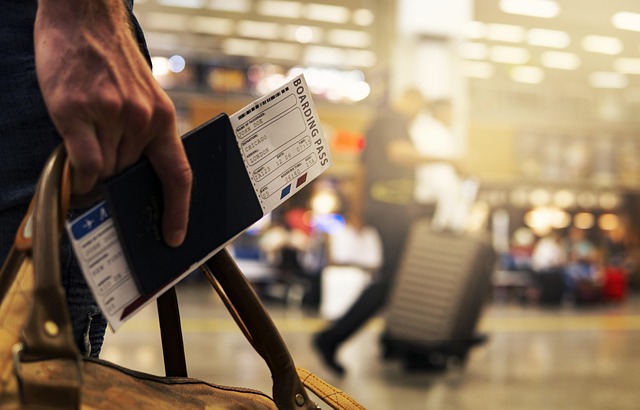Flight Ticket Trends and Travel Patterns
Flight ticket trends are influenced by various factors, including destination popularity, travel seasons, and airline schedules. Observing these patterns can help travelers understand how routes and timing may shift throughout the year, offering insight into air travel behavior and planning

How do flight availability patterns change over time?
Flight availability patterns are dynamic and influenced by numerous factors. Airlines adjust their schedules based on demand, seasonality, and economic conditions. During peak travel seasons, such as summer and major holidays, flight availability tends to decrease while prices increase. Conversely, off-peak periods often see more available seats and lower fares.
Airlines also modify their routes and frequencies in response to market trends. For instance, they may introduce new routes to popular destinations or reduce flights to less profitable locations. These changes in flight availability can significantly impact travel options and pricing for consumers.
What are the typical seasonal patterns in air travel?
Seasonal patterns play a crucial role in shaping air travel trends. Summer months generally see a surge in leisure travel, particularly to beach destinations and popular tourist spots. Winter brings increased traffic to ski resorts and warm-weather getaways. Business travel tends to peak during spring and fall, coinciding with major industry conferences and events.
Holiday periods, such as Christmas, New Year’s, and Thanksgiving in the United States, experience high demand and limited availability. Understanding these seasonal patterns can help travelers plan their trips more effectively and potentially find better deals during shoulder seasons.
How do airlines adjust their scheduling and routes?
Airlines continuously analyze market data and adjust their schedules and routes to maximize profitability and meet passenger demand. This process involves:
- Adding or removing flights on existing routes
- Launching new routes to emerging destinations
- Discontinuing unprofitable routes
- Adjusting aircraft types to match capacity with demand
- Implementing seasonal routes during peak travel periods
These adjustments can significantly impact flight options and prices for travelers. For example, the introduction of a new low-cost carrier on a popular route may lead to increased competition and lower fares across all airlines serving that destination.
What are the most popular times for domestic and international travel?
Domestic travel patterns often align with national holidays and school breaks. In the United States, summer months (June to August) and the period around Thanksgiving and Christmas see high volumes of domestic air travel. Weekends, particularly Fridays and Sundays, are typically busier for short-haul flights.
International travel trends vary depending on the destination. European countries experience peak tourist seasons during summer, while tropical destinations may see higher traffic during winter months as travelers seek warmer climates. Long-haul international flights often have more consistent demand throughout the year, with slight increases during major holiday periods.
How are traveler preferences shifting over time?
Traveler preferences are continuously evolving, influenced by factors such as technology, environmental concerns, and global events. Some notable shifts include:
- Increased interest in sustainable travel options
- Growing demand for personalized travel experiences
- Rise of “bleisure” travel, combining business and leisure
- Preference for flexible booking options and cancellation policies
- Greater use of mobile apps for booking and managing travel
These changing preferences impact how airlines and travel companies market their services and structure their offerings. For instance, many airlines now offer “basic economy” fares to cater to budget-conscious travelers while also providing premium options for those seeking enhanced comfort.
What factors influence flight ticket pricing and availability?
Flight ticket pricing and availability are influenced by a complex interplay of factors. Understanding these elements can help travelers make more informed decisions when booking their flights.
Key factors affecting flight ticket pricing and availability include:
- Demand and seasonality
- Fuel prices
- Competition on specific routes
- Day of the week and time of travel
- Advance booking period
- Special events or holidays
- Airline yield management strategies
To illustrate how these factors can impact pricing, let’s look at a comparison of average round-trip fares for popular routes during peak and off-peak seasons:
| Route | Peak Season Fare | Off-Peak Season Fare | Percentage Difference |
|---|---|---|---|
| New York to London | $800 | $600 | 33% higher in peak season |
| Los Angeles to Tokyo | $1,200 | $900 | 33% higher in peak season |
| Chicago to Paris | $950 | $700 | 36% higher in peak season |
| Miami to Cancun | $450 | $300 | 50% higher in peak season |
Prices, rates, or cost estimates mentioned in this article are based on the latest available information but may change over time. Independent research is advised before making financial decisions.
In conclusion, understanding flight ticket trends and travel patterns can significantly enhance the travel planning process. By considering factors such as seasonal fluctuations, airline scheduling strategies, and shifting traveler preferences, passengers can make more informed decisions and potentially secure better deals on their air travel.
The shared information of this article is up-to-date as of the publishing date. For more up-to-date information, please conduct your own research.




